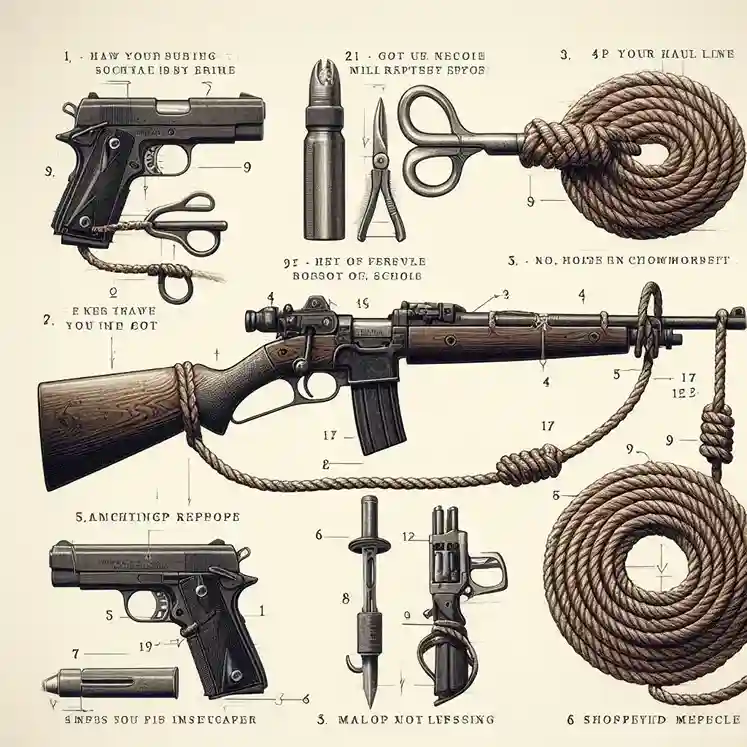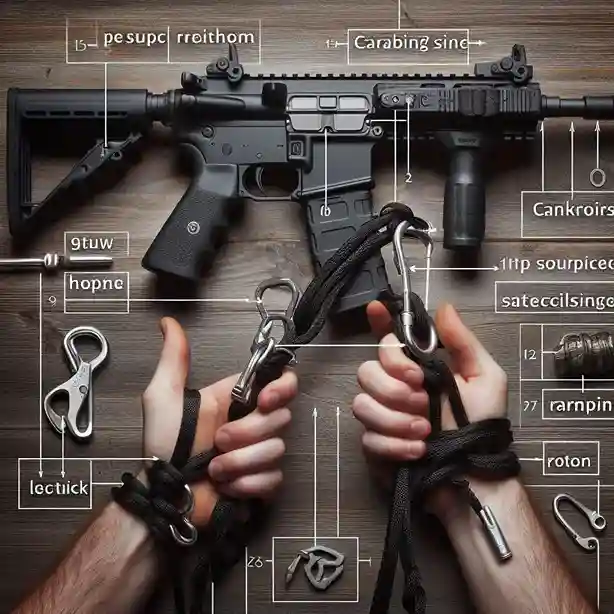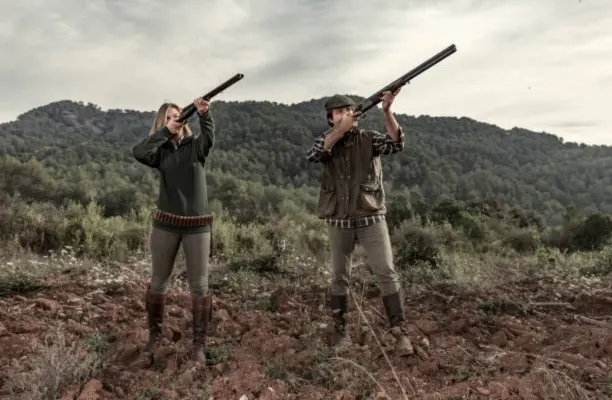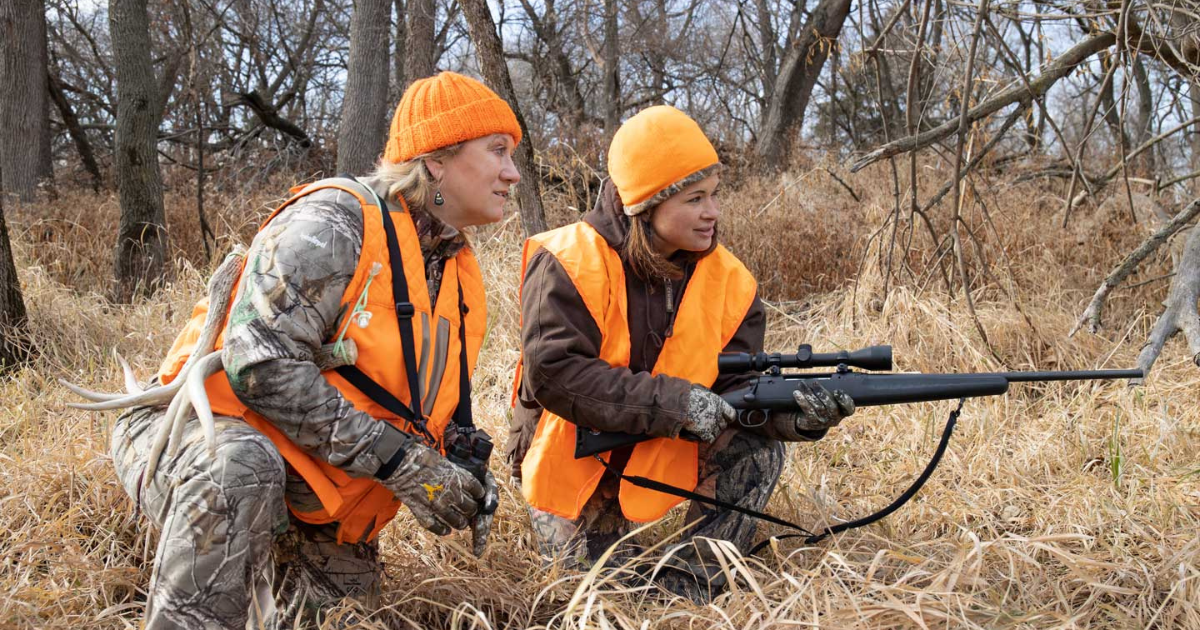Firearms have been a part of human society for centuries, serving as tools for hunting and self-defense. With the rise in popularity of outdoor activities such as hiking, camping, and rock climbing, many gun owners are now faced with the challenge of safely securing their firearms during these adventures.
One crucial aspect that often gets overlooked is how to properly attach a haul line to a firearm.
Whether you’re well-versed in outdoor activities or seeking knowledge on firearm safety, grasping this suggested approach is vital. Understanding the significance of securing your firearm with a haul line and exploring the most effective practices for doing so is key.
Overall, if you’re looking for a safe, efficient, and reliable way to attach your haul line, a carabiner is worth considering.
Table of Contents
Overview of Firearm Safety in Outdoor Activities
Before we delve into the specifics of attaching a haul line it’s crucial to highlight the importance of firearm safety, in activities. Regardless of whether you’re hunting, camping, or engaging in shooting sports adhering to safety protocols is non-negotiable.
The first and foremost rule is to treat your firearm as if it were loaded even if you’re certain that it isn’t. This mindset fosters handling practices.
Secondly, never direct your firearm toward anything you don’t intend to shoot. This additional layer of security ensures that the muzzle (the part where bullets exit) of your firearm is constantly pointed in a direction.
Lastly, refrain from placing your finger on the trigger until you’re fully prepared to shoot. By doing accidental discharges are. You only discharge your firearm when you genuinely intend to do so.
These three foundational principles of firearm safety should be deeply ingrained in your mind every time you handle a firearm outdoors. Adhering to them diligently can prevent accidents during your pursuits.
Importance of Proper Haul Line Attachment

You may be curious, about the importance of attaching a haul line when you’re out in the wilderness with a firearm. The reason is straightforward. It’s for safety and convenience.
Picture yourself on a tree stand during a hunting trip needing to bring your firearm from the ground up, to your position. This is where a haul line becomes useful. It’s a cord that enables you to safely raise or lower your equipment, including firearms.
Properly attached haul lines ensure the secure transport of your equipment, reducing the risk of accidental damage or injury. In the case of firearms, mishandling or dropping them can lead to accidental discharges, which can have disastrous consequences.
proper haul line attachment helps you handle your firearms safely, preventing accidents and making your outdoor experience more enjoyable.
Understanding Haul Lines
Definition and Purpose of a Haul Line
A haul line is like a trusty rope, and it’s a vital tool for outdoor enthusiasts. Its primary job is to help you move gear, including firearms, safely between the ground and elevated platforms like tree stands. Picture it as a reliable “elevator” for your equipment.
The key purpose of a haul line is to ensure secure transport. When you’re in the wild, the last thing you want is for your firearm to slip, fall, or get damaged during the transfer. A properly attached haul line minimizes these risks, making your outdoor adventures safer.
Different Types of Haul Lines Available

Not all haul lines are created equal. They come in various materials and thicknesses, each designed to hold different weight ranges and suited for specific situations.
- Polypropylene Haul Lines: These are cost-effective and float on water, making them perfect for wet environments like riverside hunting or fishing expeditions. They won’t drag you down if they fall into the water.
- Polyester Haul Lines: Known for their strength and durability, are best suited for rugged terrain and high-altitude activities. They can handle heavy loads without breaking a sweat.
- Nylon Haul Lines: Nylon lines excel in shock absorption, ideal for hauling delicate equipment. If you have sensitive gear, like high-end scopes or cameras, nylon is your go-to choice.
Each type of haul line has its unique attributes, making them tailored to different outdoor needs. The key is to choose the one that matches your activity and equipment load.
Recommended Methods for Attaching a Haul Line
Recommended methods for attaching a haul line to your firearm. Proper attachment ensures your gear’s safety during transportation.
Traditional Rope Method

The traditional rope method is the most straightforward and commonly used approach to attach a haul line to your firearm. Follow these steps carefully:
Step-by-step guide:
- Ensure the Firearm is Unloaded: Safety always comes first. Before attaching the haul line, make sure your firearm is unloaded. Remove any ammunition, double-check the chamber, and visually confirm that there are no bullets inside. To prevent accidental discharges.
- Wrap the Haul Line: Take the haul line and wrap it around the firearm’s stock, near the butt end that distribute weight evenly. Make sure it is secure and not overly tight.
- Tie a Secure Knot: Tie a sturdy knot that holds the haul line in place but can be untied quickly if needed. Some reliable choices for knots include the bowline knot or a square knot. These knots are strong and dependable.
- Check the Knot: Double-check the knot’s security and the line’s tension before starting the hauling process. Ensure that the haul line is snug but not too tight.
Do’s:
- Always ensure the firearm is unloaded before attaching the haul line.
- Use a strong and dependable knot.
- Check and recheck your knot and line tension before hauling.
Don’ts:
- Never attach a haul line to a loaded firearm.
- Don’t tie the knot too tight, as it could damage the firearm or be difficult to untie.
- Do not start hauling without double-checking the knot and line tension.
Carabiner Method

The carabiner method is an alternative way to attach a haul line to your firearm. It provides some advantages.
Advantages of Using a Carabiner:
- It’s convenient and straightforward: The carabiner method is compared to tying knots, which makes it a popular option, for those who prefer an effortless way to attach things.
- Flexible and adaptable: Carabiners provide attachment points allowing you to easily modify the length of the haul line according to your requirements.
- Sustainable and long-lasting: Carabiners are durable. Can be used repeatedly without concerns about damage or deterioration. You can rely on them for trips, without any worries.
Step-by-step Instructions for Attaching a Haul Line Using a Carabiner:
To ensure the firearm is safe, handling begins by verifying that it is unloaded. Remove any ammunition and double-check that the chamber is empty.
- Select a carabiner specifically designed for activities ensuring it possesses a reliable locking mechanism to prevent unintentional openings.
- Fasten the carabiner by opening its gate and passing it through a point on the firearm. This attachment point should be secure enough to bear the weight of the firearm during transportation; common options include slings or swivel mounts.
- Once attached, close and lock the carabiner gate guaranteeing that it remains securely in place preventing any detachment of the haul line from the firearm.
- Confirm that both the carabiner and haul line are properly connected by giving them a gentle tug to ensure they are firmly fastened together.
Using a carabiner as an attachment point, for your haul line offers an efficient method providing flexibility and allowing for adjustments. However, remember to select a high-quality carabiner and take care to ensure it remains securely locked at all times to avoid any accidents.
Safety Precautions
Safety is paramount when handling firearms in outdoor activities, and the same applies to the use of haul lines. In this section,
Ensuring the Firearm is Unloaded
Always make sure to double-check that your firearm is unloaded before attaching a haul line. Take a moment to confirm that the chamber is empty. This is the most crucial safety measure. Accidents can occur when there is an assumption that firearms are unloaded.
Correct Positioning of the Firearm During Hauling
When transporting a firearm it is crucial to ensure that it is positioned correctly. Always make sure that the front end of the firearm, where the bullets come out (known as the muzzle) is pointed in a direction away, from yourself and others. Be mindful to keep your fingers from the trigger to avoid any discharges. It is important to maintain handling habits for firearms when transporting them as this plays a vital role, in ensuring safety.
Regular Checks and Maintenance of Haul Lines and Attachments
Just like firearms, haul lines and their attachments need regular checks and maintenance. Inspect the haul line for any signs of wear or damage, such as fraying or weakened sections. Replace any damaged or worn-out haul lines promptly to ensure they remain reliable.
For attachments like carabiners, inspect them for any signs of rust or wear. Make sure that the locking mechanisms are functioning correctly. Regularly lubricate moving parts to prevent rust and ensure smooth operation.
Alternative Attachment Methods
While the traditional rope and carabiner methods are commonly used for attaching haul lines to firearms, there are alternative methods worth exploring. These methods might suit your preferences or specific outdoor activities better. Let’s take a look at one such alternative: using clips or loops.
Using Clips or Loops
Clips or loops offer a different approach to securing your haul line to your firearm. They provide versatility and ease of use, making them a convenient choice for many outdoor enthusiasts. Here are the key aspects of this method:
Pros:
- Fast and Convenient Attachment; Attaching and detaching clips or loops, to your firearm is a breeze saving you time during your escapades.
- Flexibility; You have the freedom to adjust the length of the haul line effortlessly by connecting it to loops or clips ensuring adaptability in scenarios.
- Simplified Knotting; Unlike the rope approach utilizing clips or loops minimizes the need for knots making it accessible even for individuals who may not be skilled, in knot-tying techniques.
Cons:
- Less Load-Bearing Capacity: Clips or loops may have a lower load-bearing capacity compared to some traditional haul line materials, so they may not be suitable for extremely heavy gear.
- Compatibility: Ensure that the clips or loops you choose are compatible with your firearm and the type of hauling you plan to do.
Situational Usage:
This method is well-suited for situations where quick and frequent attachment and detachment of the haul line are required. For example, if you need to switch between multiple firearms during a hunting expedition or need to move your gear frequently, clips or loops can be a valuable choice.
The suitability of this method depends on your specific needs and the type of equipment you’re hauling.
Advanced Tips and Techniques
Advanced tips and techniques can help you customize haul lines for specific firearms and find innovative attachment solutions for various outdoor activities.
Customizing Haul Lines for Specific Firearms
Every firearm may have unique features or dimensions that require customized haul line solutions.
- Measure and Assess: Start by measuring your firearm’s dimensions and weight. This information will help you select the right haul line material and length.
- Consider Accessories: If your firearm has additional accessories like scopes or bipods, factor in their dimensions and weight when customizing your haul line.
- Padding and Protection: For delicate firearms or those with sensitive finishes, consider adding padding or protective layers to your haul line to prevent scratches or damage during transportation.
- Practice: Before heading into the field, practice attaching and detaching your customized haul line to ensure a smooth and secure process.
Innovative Attachment Solutions for Different Outdoor Activities
Depending on your outdoor activity, you might encounter unique challenges when attaching haul lines to firearms.
- Water-Based Activities: If you’re engaged in activities like kayaking or canoeing while carrying firearms, consider waterproof haul lines that float. These lines can be a lifesaver if your gear accidentally ends up in the water.
- Treestand Hunting: For treestand hunters, using a haul line with a pulley system can make the process of raising and lowering gear, including firearms, much more efficient. It reduces the physical effort required and minimizes the risk of drops.
- Backpacking and Hiking: Lightweight and compact haul lines are essential for backpacking or hiking trips where every ounce matters. Look for materials that are strong yet won’t add unnecessary bulk to your gear.
By customizing your haul lines and exploring innovative attachment solutions, you can optimize the safety and convenience of transporting firearms during various outdoor activities.
Case Studies and Real-Life Scenarios
Real-life case studies and scenarios provide practical insights into the importance of proper haul line attachment and firearm safety.
Examples of Accidents Due to Improper Hauling
Case Study 1: The Slip-Up
Imagine a hunter who didn’t properly secure his firearm with a haul line. During an attempt to raise it to his tree stand, the rope slipped from his hand. The firearm plummeted to the ground, hitting a rock and discharging accidentally. Thankfully, no one was injured, but it serves as a stark reminder of the potential dangers of improper haul line attachment.
Case Study 2: The Hasty Knot
In another scenario, a shooter hastily tied a knot to attach the haul line to his rifle without ensuring its security. While attempting to raise the firearm, the knot came undone, causing the firearm to fall. This accident not only damaged the rifle but also posed a significant safety risk.
These real-life examples highlight the consequences of overlooking proper haul line attachment procedures. Accidents like these can lead to injuries, firearm damage, or even worse outcomes.
Success Stories of Safe Firearm Transportation
Success Story 1: The Prepared Hunter
On the flip side, there are countless success stories of hunters and outdoor enthusiasts who prioritize firearm safety and proper haul line attachment. By following the guidelines, they’ve safely transported their firearms during various outdoor activities, from hunting to shooting sports.
Success Story 2: The Experienced Camper
An experienced camper recounts his years of using haul lines to transport firearms safely during wilderness trips. By meticulously checking knots, securing carabiners, and adhering to safety protocols, he’s never experienced an accident or firearm mishap in the field.
These success stories emphasize the importance of responsible firearm handling and proper haul line attachment. By taking safety seriously and following best practices, you can enjoy your outdoor pursuits without compromising on safety.
Legal and Ethical Considerations
Understanding and adhering to legal and ethical principles is an integral part of responsible firearm handling during outdoor activities.
Understanding Local Laws and Regulations
Firearm laws and regulations can vary significantly depending on your location.
- Start by conducting some research, on the laws about firearms in your state or country. It’s important to note that different locations may have varying regulations when it comes to owning, carrying, and transporting firearms.
- Make sure to find out if you are required to obtain any permits or licenses to legally possess and transport firearms. Adhering to these requirements is essential, to avoid any repercussions.
- Get to know the regulations about transporting firearms. It’s important to understand the storage of firearms while, in transit and any limitations on carrying loaded firearms in vehicles.
- Additionally, certain areas may require the use of safety locks or specific storage methods for firearms, during transportation. Make sure you comply with these regulations to steer clear of any complications.
Ethical Implications of Firearm Handling in Public Spaces
In addition, to considerations, there are implications associated with carrying and using firearms in public spaces. Responsible firearm enthusiasts should keep the following principles in mind;
- Respect for Others; Always be considerate of others when handling firearms. Avoid displaying or showing firearms in a way that might make people around you feel scared or uncomfortable.
- Environmental Responsibility; Show commitment to conserving the environment. Avoid littering and make sure to pick up spent cartridges and other debris associated with using firearms in areas.
- Public Perception; Be mindful of how your actions involving firearms might be perceived by the public. Use self-control and discretion to prevent causing alarm or distress to others.
- Education and Outreach; Share your knowledge about firearm use with newcomers. Encourage safety and ethical practices, within the firearm community.
By understanding and complying with both requirements and ethical principles you can help foster a culture of firearm handling ensuring that firearms continue to be seen as safe and respected elements of outdoor activities.
Conclusion
In conclusion, ensuring proper haul line attachment is paramount for firearm safety during outdoor activities. This article has highlighted the fundamental principles of firearm safety, emphasizing the importance of treating every firearm as loaded, not pointing it at anything unintended, and keeping fingers off the trigger until ready to shoot.
Understanding haul lines and the various attachment methods, such as the traditional rope and carabiner methods, provides outdoor enthusiasts with essential tools for securely transporting firearms and gear. Safety precautions, including confirming the unloaded status of firearms and maintaining correct positioning during hauling, are imperative to prevent accidents.
Exploring alternative attachment methods like clips or loops offers flexibility, while advanced tips and techniques enable customization for specific firearms and innovative solutions for diverse outdoor activities.
Real-life case studies underscore the consequences of improper hauling, underscoring the need for responsible firearm handling. Complying with local laws and ethical considerations is essential to create a culture of safety and respect in outdoor firearm use.
In conclusion, prioritizing safety and responsibility in firearm transportation through proper haul line attachment ensures that outdoor enthusiasts can enjoy their activities while minimizing risks and promoting responsible firearm use.
FAQ (Frequently Asked Questions)
- Why is it important to attach a haul line, for firearm safety during activities?
Ensuring proper haul line attachment is crucial in securely transporting your firearm and gear reducing the risk of accidents, injuries or any potential damage. It plays a role in firearm handling when engaged in outdoor settings.
- What are the various types of haul lines available and how can I select the one for my specific needs?
Haul lines are made from materials such as polypropylene, polyester and nylon. Each material is designed to cater to situations. To determine the type for you consider factors like the nature of your activity and the weight of your equipment. You can find information about types of haul lines here.
- What advantages does using a carabiner provide for attaching a haul line?
Carabiners offer attachment, adjustability and reusability. They are particularly ideal for individuals who prefer a hassle attachment process and require flexibility in adjusting the length.
- How can I ensure that my firearm is unloaded before attaching a haul line?
Always adhere to firearm safety rules. Remove any ammunition present visually inspect the chamber to confirm its emptiness. This step is crucial, in preventing discharges.
- What innovative solutions exist for attaching firearms during activities?
When engaging in activities it’s important to consider the ethical aspects of firearm handling. It is crucial to research and abide, by the laws and regulations regarding firearms in your location. Ethically speaking responsible individuals who are enthusiasts of firearms should prioritize safety. Show respect, for others, environmental stewardship, and public perception.
- What are some advanced tips for customizing haul lines for specific firearms?
Measure your firearm’s dimensions, consider its accessories, add padding for protection if needed, and practice attachment to ensure a secure fit.
- Where can I find more information on firearm safety and outdoor activities?
You can explore additional resources on firearm safety and outdoor activities through organizations like the National Rifle Association (NRA) and state-specific hunting and outdoor agencies. Additionally, reputable firearm and outdoor safety courses are available for hands-on training.
By understanding and following these guidelines and frequently asked questions, you can enhance your knowledge of firearm safety during outdoor activities and make informed decisions regarding haul line attachment.






